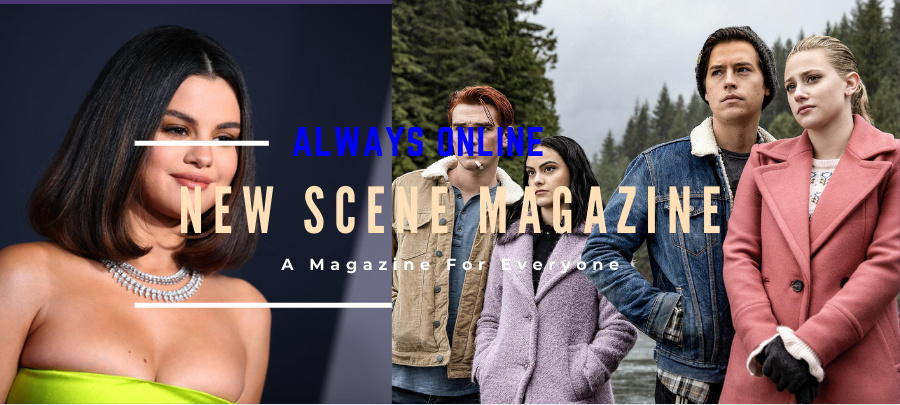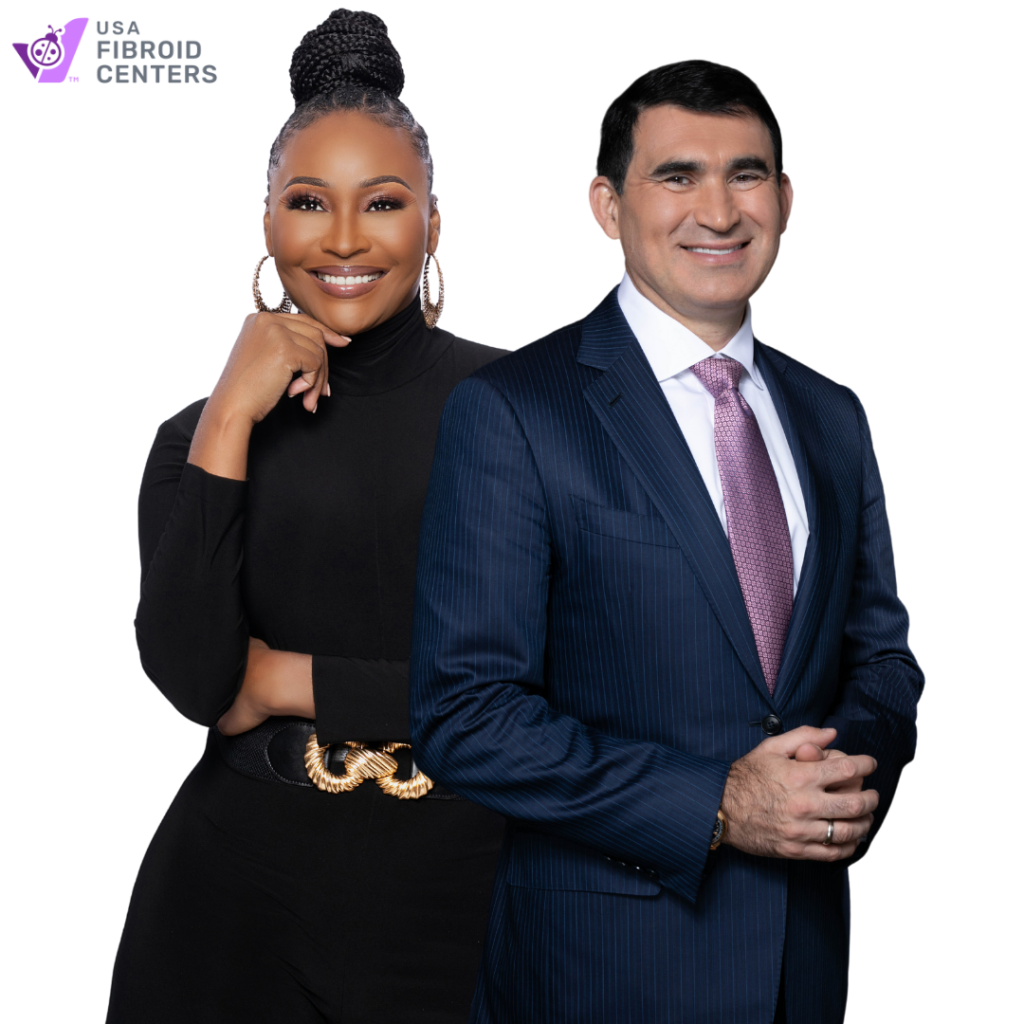Two amazing individuals coming together for a great cause.
USA Fibroid Centers specializes in the non-surgical treatment of uterine fibroids, dedicated to helping women be healthy and enjoy their lives being fibroid-free. Recently, the organization launched #LovingYourselfUFE to encourage the process of Uterine Fibroid Embolization. Two of the many supporters of the campaign are Dr.Yan Katsnelson, Founder and CEO of USA Fibroid Centers, and Cynthia Bailey, Social Media influencer, Philanthropist, and Activist.
We first had the honor of speaking with Dr.Yan Katsnelson on the mission of the campaign and how this organization came to be.
Q: What first inspired you to start USA Fibroid Centers?
Katsnelson: “The magic of healing fascinated me as a cardiovascular surgeon. I was impressed by the outcomes of minimally invasive treatment and how rapidly people recovered after a procedure, and how it would drastically improve their way of life. When USA Fibroid Centers started offering uterine fibroid embolization (UFE), I realized that most of the 500,000 hysterectomies and a few hundred thousand myomectomies performed every year in the United States were being done to treat benign fibroid tumors. The prevalence of the fibroid epidemic in the United States, which affects 26 million women, is a wake-up call that women deserve better health care. Almost no one receives treatment, such as UFE, which protects a woman’s uterus. And I discovered that there is a dearth of understanding about fibroid disease, which we all need to focus on. It’s a health issue, a social issue, and a community issue all rolled into one.”
Q: What would you say is the most common misconception on fibroids?
Katsnelson: “Misconceptions regarding fibroids are almost as frequent as fibroids themselves: by the age of 50, 70 to 80 percent of women have fibroids. One of the most common fibroid treatment myths is that women believe their only treatment choice is surgery― a hysterectomy. The vast majority of these surgeries can be avoided by utilizing minimally invasive UFE treatment that can be performed in the office. It only needs a small needle hole in the wrist to insert a small catheter, guided by ultrasound imagery. The UFE technique does not require hospitalization, and patients can resume regular activities in as little as a few days.”
Q: What are your biggest hopes for the #LovingYourselfUFE campaign?
Katsnelson: “#LovingYourselfUFE campaign hopes to reach women affected by fibroids to learn more about their treatment choices. UFE is an FDA-approved treatment that saves the uterus and a woman’s capacity to conceive. Compared to a hysterectomy or myomectomy, most women are recovered in a week or two. UFE also has no detrimental effects on a woman’s hormones or other organs such as the bladder, bowels, or pelvic floor. Unlike a hysterectomy, UFE does not put a woman into early menopause. We encourage that all women explore their treatment options by visiting our website at www.usafibroidcenters.com.”

We then spoke with Cynthia about her personal experience and any advice she can share from her experiences.
Q: Can you tell us about your journey with fibroids?
Cynthia: “Doctors told me I had a fibroid when pregnant with my daughter Noelle. It was the size of a grape at the time, and it wasn’t malignant, so it was nothing to be concerned about. They told me it would probably go away on its own, which it didn’t. After Noelle was born, I became anemic, and I was always tired. Later my stomach began to protrude. I went to my ob-gyn and questioned why I had a bloated stomach because I’ve been thin most of my life. It was because of fibroids.
In 2013, I was photographed on the red carpet at the Miss USA pageant with a decidedly rounded abdomen evident beneath my clothing. The photo sparked the speculation that I was pregnant, resulting in a social media frenzy of speculation. But I wasn’t expecting a child. My gynecologist at the time recommended that I have a hysterectomy, but I was never interested in that option. When I first began looking at treatment options, I discovered that most people either wanted me to get a hysterectomy and be done with it or believed that fibroids were not that severe and that I should just cope with them. Fibroids have a significant impact on your life, and therefore, this is easier said than done.
Besides a bloated stomach, I experienced other unpleasant symptoms, including pain and pressure in my pelvis, painful sex, and urinary urgency. I couldn’t call in sick because I was a businesswoman with a hectic schedule. I couldn’t lay in bed for two or three days because I was dealing with a heavy period. I still had to show up. I researched my options and decided on a non-surgical uterine fibroid embolization (UFE). The procedure was exactly like they said it would be, so it was not super invasive. It was pretty quick. The recuperation period was pretty easy. I was back at work in a couple of days. I was filming by the third day for sure, I remember. In about a month, I could see lighter periods. They went from eight days to four days, which was a blessing.”
Q: Do you think fibroids are more common with people of color?
Cynthia: “Since becoming a USA Fibroid Centers Fibroid Ambassador, I’ve learned that almost 25% of Black women aged 18 and 30 have fibroids compared to about 6% of white women. By age 35, that number increases to 60%. Black women are two to three times more likely to have recurring fibroids or suffer from complications. Among the Real Housewives of Atlanta’s primarily Black cast, everyone, except one or two people out of six, had fibroids. That’s why I decided to share my fibroid journey with the world and my fans on the show. After the episode aired, I was approached by women worldwide who would come up to me and say, ‘Because of you, I did something about my fibroids,’ or ‘I’ve never talked about my fibroids.’ I’m passionate about helping women learn about treatment options, like UFE. Black women are at least twice as likely as white women to undergo a hysterectomy. I want all women to know that there are options besides surgery.”
Q: What would you say is your biggest piece of advice towards others who are suffering from fibroids?
Cynthia: “Talk with your family. My mother had fibroids, but she didn’t know that she had them, and she ended up having a hysterectomy, which opened a whole set of other issues for her. She didn’t know what was happening and just suffered. If you are suffering from fibroids, love yourself, by taking time to address your own health needs.”
To learn more about Cynthia’s story and additional information regarding the USA Fibroid Centers, please visit: Cythina Bailey’s Uterine Fibroid Story | USA Fibroid Centers | USA Fibroid Centers
We at New Scene largely support the #LovingYourselfUFE campaign and we want to thank Dr. Yan Katnselson and Cynthia Bailey for their encouraging words.
Je’Kayla Crawford– Founder and Director– Je’Kayla has been a journalist for years and decided to start a publication of her own, New Scene. When not helping her team and working on the monthly issues, you can find her watching a movie on Netflix or baking using a viral Tasty recipe.
You may also like
-
Cupid Talks About New Line Dancing Social Media Era & Teases Upcoming Music Collabs
-
Charlie Rogers Talks About Mental Health And New Single ‘Missed Call (Acoustic Version)’
-
Quill Talks About Finding Her Voice Through Music And Enchanting Her New Single ‘Ghosts’
-
Avery Lynch Talks About Celebrating Her Wins, Performing Live, And Her New Single ‘Rain’
-
Jennifer Wigmore Talks About The Purpose Behind AACE And Role In Prime Video’s ‘CROSS’

